a free post today, a short look at a few distinctive 17th-century carved boxes from Windsor, Connecticut. There’s a brief look as well at some comparisons between these boxes and some made in Braintree, Massachusetts at the same time.
While I was reviewing a bunch of Connecticut carved furniture, I ran across a few photos in my files of 3 boxes made in Windsor, Connecticut. I’ve only ever seen one of them and that only in passing. They are in three collections; Yale University Art Gallery, Metropolitan Museum of Art and the Oneida Historical Society in New York. That box descended from William Buell of Windsor, Connecticut. Buell was a woodworker, mostly on record for fittings made for meeting houses, etc. I’ve never seen the Oneida box - this photo comes from the exhibition catalog New England Begins by Fairbanks & Trent :
Disregarding the attribution, I’ve been interested in the boxes for some time because of the similarities between them and the boxes I know from the Savell family of joiners in Braintree, Massachusetts. The “Buell” boxes at Yale and the Met are posted on their online collections. The Buell boxes are quite large - over 9” high and 28” wide. The Met’s box (below) has two sets of linked rosettes carved across its front and single sets on each end. It’s unusual for New England boxes to be carved on the ends - mine almost always are - but period ones rarely are.
Framing those linked rosettes are bands of alternating zig-zag patterns cut with gouges and chisels and accented with a punch.
For comparison, a detail from one of the Braintree boxes - here the framing bands are cut only with a chisel and accented with a punch.
The Met’s box is more involved - those bands use 2 tools and a punch and there’s a vertical band running beside the carved pattern. Both boxes use marking gauge lines to outline these framing bands. Both boxes have notched decoration at the ends of the front board - the Met box seems to be cut with a gouge and chisel - almost an egg-and-dart pattern.
There’s more similarities too - the way both carvers use a gouge to cut incised and chopped accents around and within the carvings caught my eye. I’ve always called the way the Savells did their gouge-cut accents in batches of threes or fours - two or three lighter strikes of a gouge surrounding a chopped-out crescent - an “echo” - this detail from a Savell box at the Met shows these cuts just under the top border, outside the half-circle/lunette. They also appear outside the flower shapes inside the lunette. These are on all the carved patterns this shop used.
The Yale box has two large “eyes” carved across its front with linked rosettes between them. The ends are carved as on the Met’s box. All three of these Connecticut boxes have wooden pintle hinges - another rarity in New England boxes that I adopted for my boxes almost exclusively. They’re oak boxes with pine lids and bottoms - the Savell/Braintree boxes have oak lids/pine bottoms and use iron “snipebill” hinges.
The Yale site has a good detail of their “Buell” box - you can see the way the carver here alternated between chopped-out crescents and lighter strikes before and after these cuts.
None of it means anything, but I still find these comparisons interesting. The few discussions about William Buell cite his origins in Huntingdon, England - my notes indicate that updated genealogical research threw this record out - but my earlier notes are on paper, filed away pretty deep. They’ll keep.
While I was digging around for these images, I dug out my copy of Frances Gruber Safford’s American Furniture in the Metropolitan Museum of Art: vol 1, Early Colonial Period: The Seventeenth-Century and William & Mary Styles. I noticed a link on their website where you can download this out-of-print book. Not as good as having the actual book, but worth a click/tap. https://www.metmuseum.org/met-publications/american-furniture-in-the-metropolitan-museum-of-art-vol-i-early-colonial-period-the-seventeenth-cen

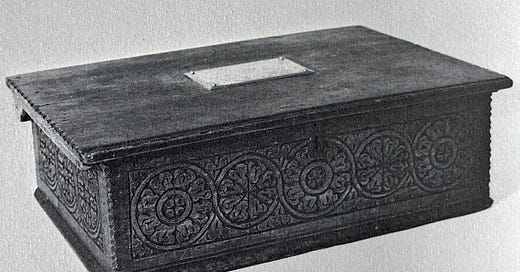



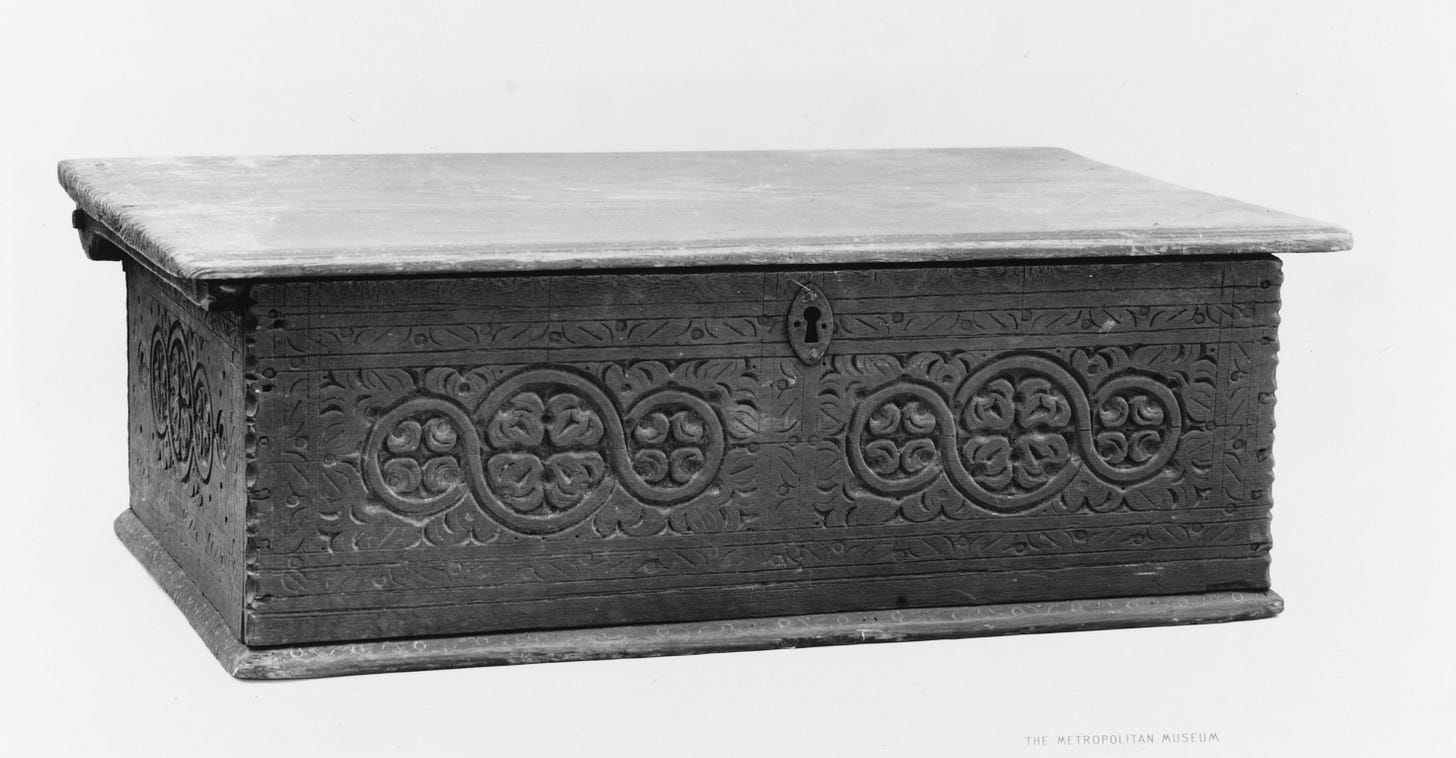
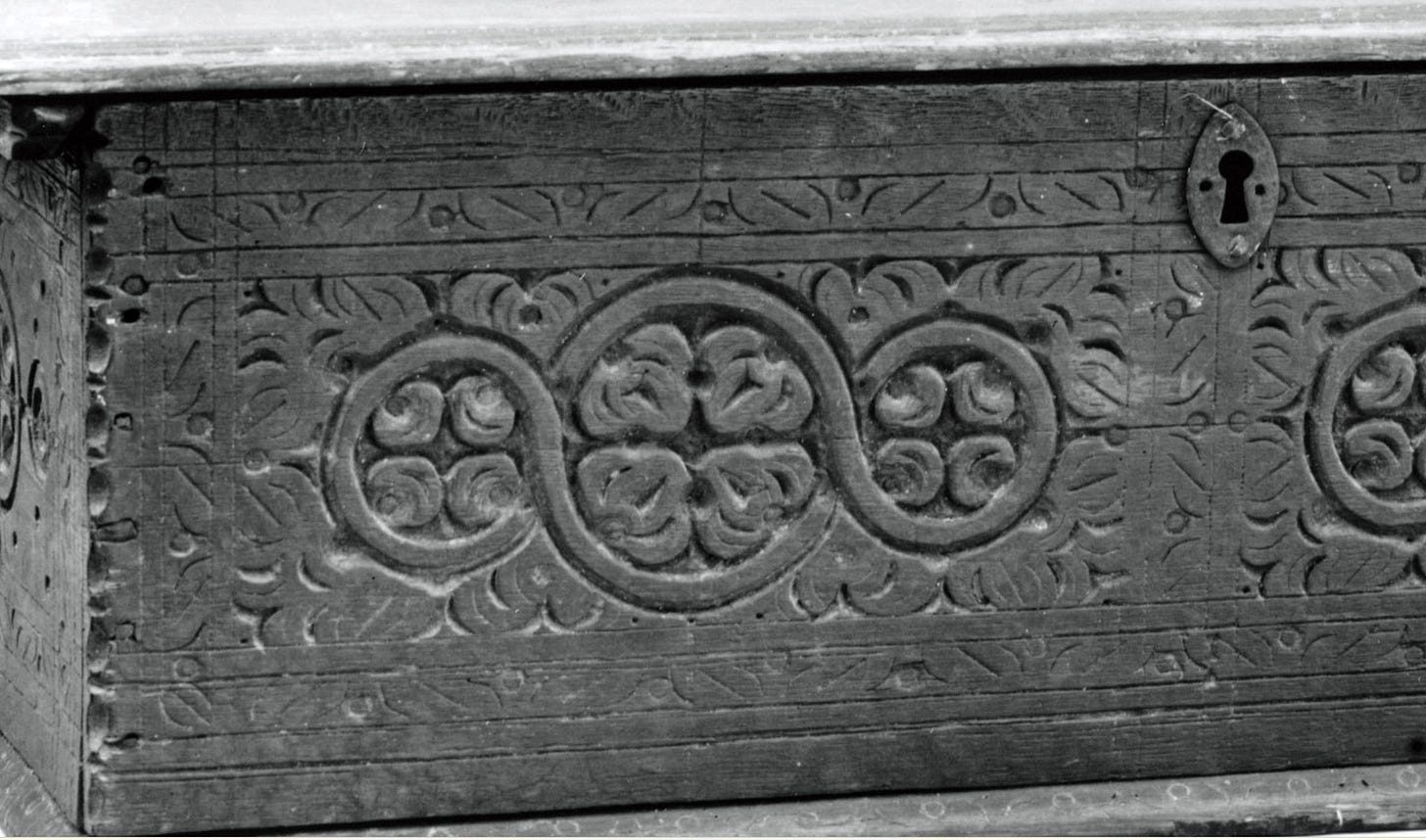

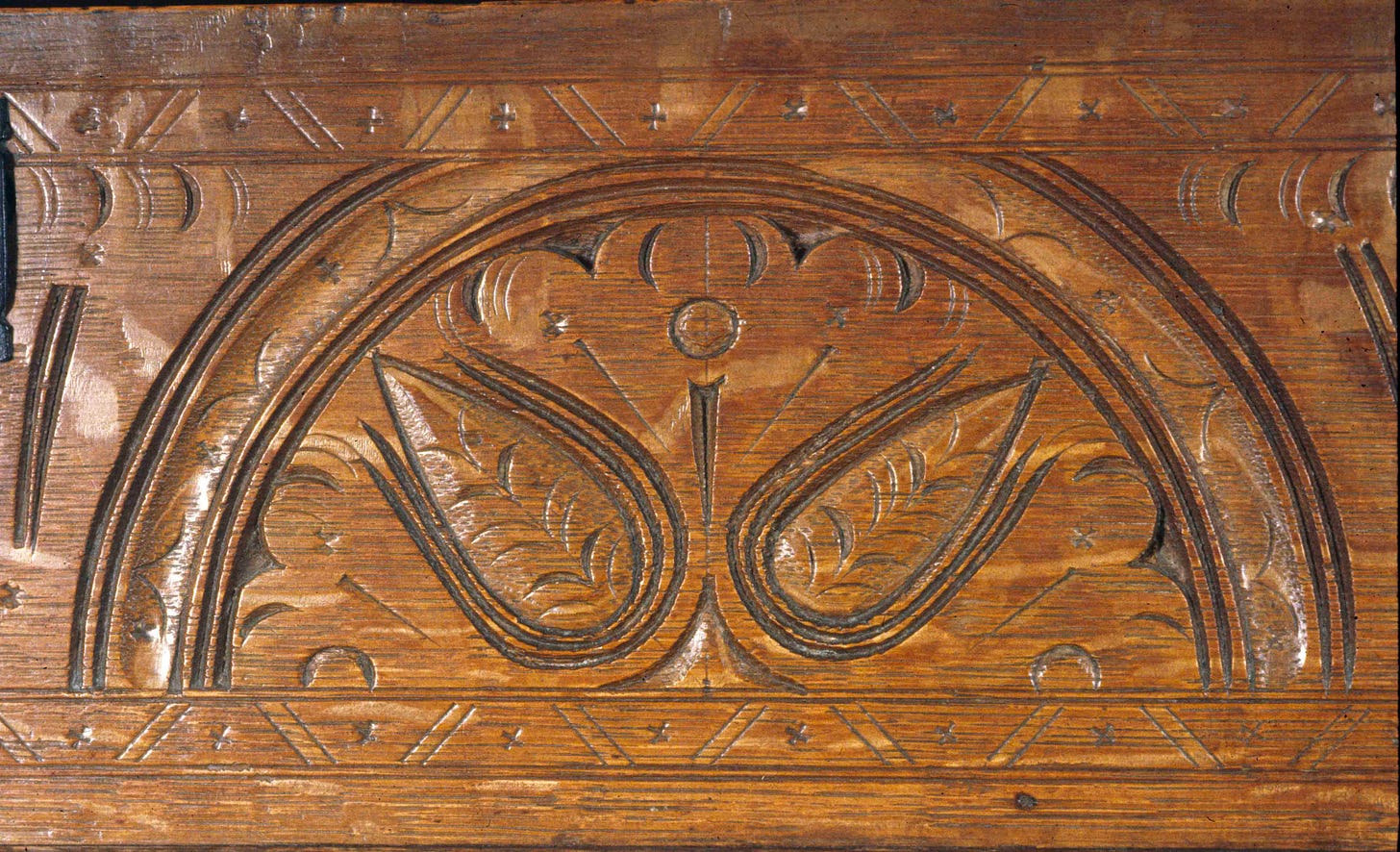
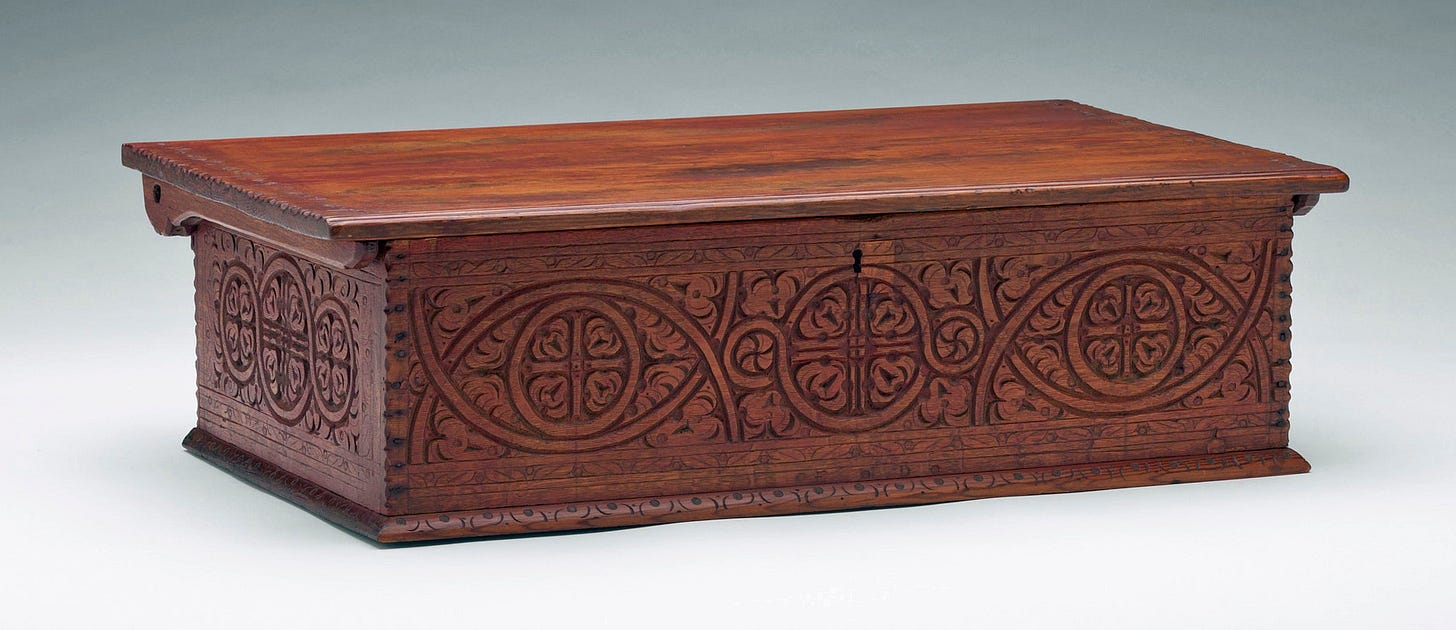

Well thanks for another great article and the link to the book pdf. I have just looked at the books pictures so far and it seems interesting. The carving on chests in figures 86 and 87 attributed to New Haven stuck out as something I don’t recall seeing before. I know you have written about New Haven before but I didn’t see these when I searched old blog posts. Should be an excellent read.
I love the circular/meander/reminiscent of Celtic knot work patterns. There's just something so simple and...authentic(?) about them.